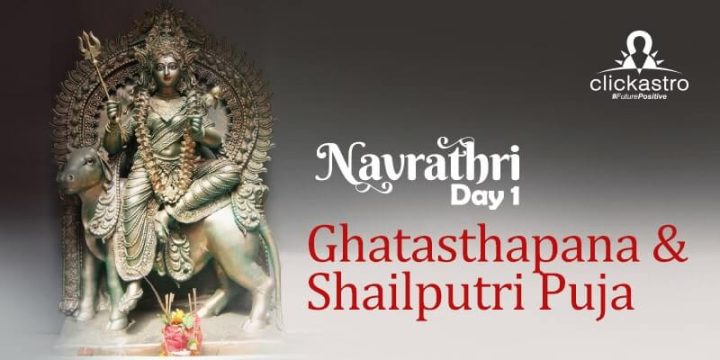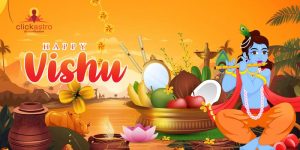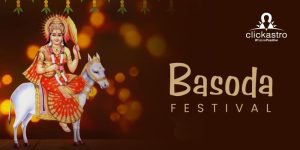Contents[hide]
Shardiya Navratri 2024: Know the dates, colours and story
The first day of Navratri is devoted to Goddess Shailaputri, the first of Goddess Durga’s nine manifestations. The Shukla Paksha Pratipada is the month of Ashwin and marks the beginning of Shardiya Navratri. On this day, Ghatasthapana and Shailaputri puja are performed. Goddess Shailaputri who is revered on this day is also known as Bhavani, Parvati, and Hemavati. She is considered to be the essence of the earth. Goddess Shailaputri is the ultimate and significant form of Nava Durga, as she is Lord Shiva’s wife and is known as Parvati. She was born as Lord Himalaya’s daughter, thus her name Shailaputri implies “the daughter of the mountains.” Her deity wears a half-moon on her forehead and carries a trident in her right hand and a lotus flower in her left. The goddess is depicted mounted on Nandi (bull). She embodies the power of Brahma, Vishnu, and Shiva.
Legend of Goddess Shailaputri – The Devi of the day
Before being born as Shailaputri, she was born as Sati, the daughter of Daksha, who was one of Lord Brahma’s sons. Sati was passionately in love with Lord Shiva and desperately wanted to marry Lord Shiva; however, her father Daksha was vehemently opposed to Sati marrying Lord Shiva. He considered Lord Shiva as a grubby ascetic who was not fit to marry girls from respectable families. However, this did not deter Sati and despite her father’s opposition, she married Lord Shiva and began living with Him in Kailas. After a few years, she learned that her father, Daksha, was planning a massive yajna to which all gods and goddesses were invited. She was overjoyed to hear this as she missed her parents and wanted to meet them; however, she was not invited to the yajna. Sati could not believe it and wondered if there had been an error. Despite Shiva’s best efforts in convincing her that they were not wanted, she went to see her parents. She defiantly set on to attend the yajna. She ignored Shiva’s advice and visited her home. She was thrilled to see her parents after so long; however, she was met with a cold shoulder not only from her father, but also from all her relatives who had gathered there. Only her mother welcomed and embraced her, but Sati was heartbroken; she could not bear the thought of being unwanted in her own home. She was humiliated by her father for her choice of husband. Sati could not take the insult of her husband anymore and jumped into the massive yajna fire immolating herself. When Lord Shiva heard the news, he was furious. He reached the yajna site and angrily pulled the half-burning corpse of Goddess Sati. Enraged, he took the form of Veera Bhadra and caused extensive destruction of the yajna and also beheaded Daksha. He then dragged the half-burning corpse of his wife taking her back with him. Along the way various body parts of Goddess Sati fell on various locations which then became known as Shakti Peethas. In India there are fifty-two such Shakti Peethas. Daksha was later forgiven following Lord Vishnu’s intervention and he was given the head of a ram. He even finished his Yajna in front of all the gods. Goddess Sati was reborn as the Himalayas’ daughter. She was given the name Shailaputri, meaning “the daughter of the Mountains.” She is also known by two other names in this manifestation – Parvati and Hemavati, also married to Lord Shiva. On the first day of the Navratri festival, we worship Goddess Shailaputri, one of the most powerful forms of Durga. She is extremely powerful; rides the bull Nandi and carries a trident and a lotus. She is well-known for her numerous triumphs.Ghatasthapana Puja Vidhi
The Navratri puja begins with Ghatasthapana, a ceremony that represents the power of women. Ghatasthapana is the most important ritual of Navratri and is performed on the first day of the festival. This puja should be conducted according to the right norms and puja Muhurat. It is forbidden to perform this puja during Amavasya and at night. Ghatasthapana is an incantation of Goddess Shakti and performing it at the wrong moment will incur Goddess Shakti’s wrath. The Ghatasthapana puja is performed with holy and symbolic puja items. To form the base, a shallow pan-like utensil made of clay is used. The pan is then covered with three layers of mud and then dispersed with Saptadhanya/Navadhanya seeds. Then, a small amount of water should be sprinkled on the seeds to ensure adequate moisture. The Kalasha is then filled with the holy Ganga Jal. Supari, a few coins, Akshat (raw rice mixed with turmeric powder), and Durva grass are then added to the Ganga Jal. Following that, five mango leaves are wrapped around the Kalash’s neck, which is then covered with a coconut. After installing the idol or picture of the Goddess, the following pujas are performed to invoke the GoddessFirst an Atma puja is performed for self-purification. The worshipper then applies tilak on the forehead and drinks the holy water from the palms. Taking the water in the hand a Sankalp (vow) is then made to observe the Navratri fast with absolute devotion to the Goddess. The deity is then offered flowers. The Goddess’s feet are washed with the holy water. The deity is then bathed with camphor mixed with water, pure cow milk, ghee, honey, sugar and panchaamrita. The Goddess is then decked with a Saree or a cloth. Sandalwood tilak is then applied on the deity and then offered kajal, Durva leaves and Bilwa leaves. An aarti is then performed with the Dhoopa and Deepa and offered prasad which is then later distributed among the devotees.
Significance of Shailaputri Puja
It is believed that the Moon, the provider of all fortunes, is ruled by Goddess Shailaputri, and that worshipping her can counteract any negative effects of the Moon. Shailaputri is the embodiment of life on Earth. She resides in the Mulaadhara Chakra. Every human being possesses divine energy. It will be realised. It is crimson in colour. Earth is the element (Tattva), with the quality (Guna) of coherence and the distinctive characteristics (Bheda) of the smell (Ghraana). This puja is performed after Ghatasthapana on Pratipada Tithi,Shailaputri Mantra
Om Devi Shailaputryai Namaha॥Stuti
Ya Devi Sarvabhuteshu Maa Shailaputri Rupena Samsthita।Namastasyai Namastasyai Namastasyai Namo Namaha॥
Prarthana
Vande Vanchhitalabhaya Chandrardhakritashekharam।Vrisharudham Shuladharam Shailaputrim Yashasvinim॥
Dhyana
Vande Vanchhitalabhaya Chandrardhakritashekharam।Vrisharudham Shuladharam Shailaputrim Yashasvinim॥
Punendu Nibham Gauri Muladhara Sthitam Prathama Durga Trinetram।
Patambara Paridhanam Ratnakirita Namalankara Bhushita॥
Praphulla Vandana Pallavadharam Kanta Kapolam Tugam Kucham।
Kamaniyam Lavanyam Snemukhi Kshinamadhyam Nitambanim॥
Read about Navratri day 2 – Brahmacharini Puja







